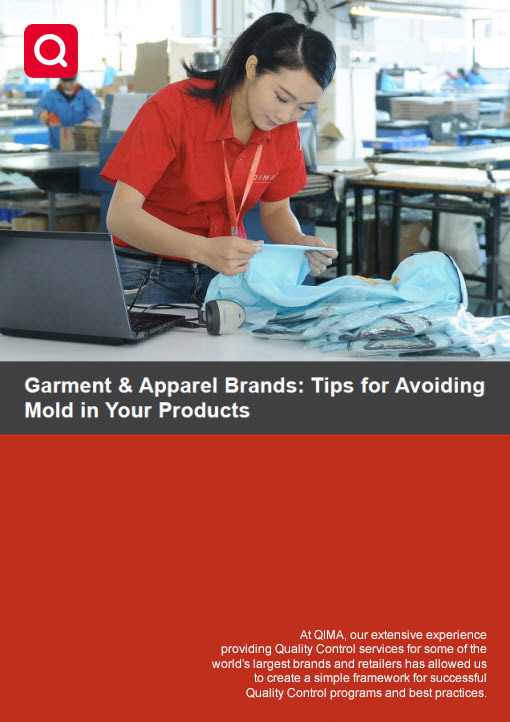Complimentary White Paper
QIMA Technical Update: How to Avoid Mold in Your Garments
A best practice approach for preventing product loss in garments and apparel.
This White Paper will give you insights about:
- The risks of mold during production and shipping, particularly in humid climates.
- The steps to take to minimize your products exposure to moisture.
- The correct anti-mold products and quantities to use to ensure your products arrive ready for sale.
Scaricando questo contenuto da QIMA l’utente accetta la nostra informativa sulla privacy e i nostri termini e condizioni
Mold Risks Present in Global Apparel Supply Chains
South and Southeast Asia, which are home to the world’s garment manufacturing powerhouses, experience some of the highest annual rainfall globally. When sourcing from this region, anti-mold practices are a necessity, as mold can occur at any stage of production and shipping, easily resulting in 100% product loss unless effectively combated.
Organic materials, faux leather, and coated fabrics are particularly prone to mold. Other factors that influence the risk of mold are pre- and post-manufacturing treatments, storage, shipping time and route, weather conditions, and mold protection methods in place.
Critical Stages of Mold Prevention:
- Sourcing of raw materials and semi-finished products
- Production environment
- Storage during all production phases
- Washing/pressing processes
- Packaging
- Container shipping
Download the whitepaper for technical advice on mold prevention at every stage of your garment supply chain, as well as additional anti-mold safeguards for your textile and apparel products.


